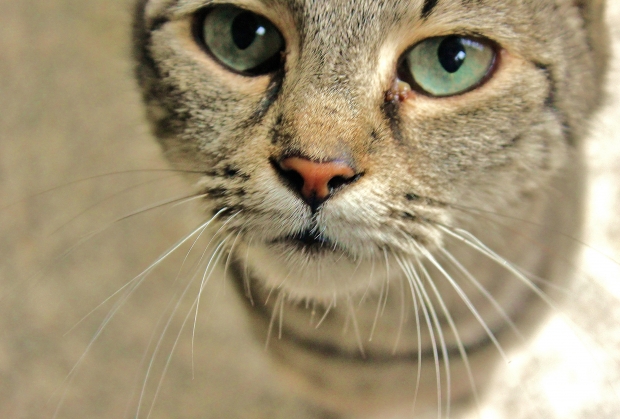Laser Therapy for Pets
The team at All Pets Veterinary Medical Center is proud of our state of the art veterinary clinic and many of its special services–one such unique service is laser therapy for pets.
 Many people often believe that dogs can’t actually see what is going on when they watch TV—but is that true?
Many people often believe that dogs can’t actually see what is going on when they watch TV—but is that true?
Continue reading Can Dogs Watch TV? How Do Canine Eyes Change Over the Years?
 There are many species of birds such as robins, scrub jays, crows and owls that leave the nest and spend as many as 2-5 days on the ground before they can fly. This is a normal and vital part of the young birds’ development. The birds are cared for and protected by their parents while they are on the ground, and are also taught vital life skills such as finding food, identifying predators and flying.
There are many species of birds such as robins, scrub jays, crows and owls that leave the nest and spend as many as 2-5 days on the ground before they can fly. This is a normal and vital part of the young birds’ development. The birds are cared for and protected by their parents while they are on the ground, and are also taught vital life skills such as finding food, identifying predators and flying.
 With summer officially here, many families are traveling and and making vacation plans. If you have a dog, before you think about leaving him or her behind, consider these benefits of traveling with your furry friend.
With summer officially here, many families are traveling and and making vacation plans. If you have a dog, before you think about leaving him or her behind, consider these benefits of traveling with your furry friend.
Continue reading Benefits of Traveling with Your Dog and Pet Friendly Hotels
This is 2016: The year of the Monkey. According to Chinese astrology, if you were born in monkey years (1920, 1932, 1944, 1956, 1968, 1980, 1992, 2004) then you are intelligent, witty, and inventive -just like our primate friends!
Primates come in all shapes and sizes, but had you ever heard of a Bushbaby? They are the SMALLEST primates in Africa. Some are kept as pets Continue reading Monkey Business!
There’s no better way to start the year than with a shiny new smile. Pets want good smelling breath just as much as you want them to have it! Stinky breath and brown spots on the teeth are signs of dental calculus build up and gingivitis- things that could lead to serious dental disease- but are very preventable! Continue reading February is Dental Health Month!
 Many people have experienced “that look” with their pets. The one where it’s like he’s trying to say, “What? You’re leaving me?!?” No matter how many times you try to explain it to him that he gets sick in the car and he’ll be miserable if you take him along, he doesn’t understand what you’re saying. All he knows is that you’re going on a vacation, and he’s not.
Many people have experienced “that look” with their pets. The one where it’s like he’s trying to say, “What? You’re leaving me?!?” No matter how many times you try to explain it to him that he gets sick in the car and he’ll be miserable if you take him along, he doesn’t understand what you’re saying. All he knows is that you’re going on a vacation, and he’s not.
Having a dog who gets car sick when traveling can definitely present its challenges, but it doesn’t mean that you can’t all enjoy the holiday vacation together! Here are a few helpful tips for traveling with a pet who gets car sick.
Although owning a pet bird may seem like an easy and fun endeavor, there are many challenges associated with maintaining happy and healthy birds. Some pet birds are caged most of their lives and get rather lonely without the stimulating contact between people or with their instincts. Adding this sort of stimulation to your birds life can improve his or her overall happiness, and being in a cage all the time won’t seem so bad. Significant aspects of natural behavior are denied to varying degrees for birds kept as companion animals. Examples of these include flocking, social interaction with other birds, foraging on a variety of foods, and flight. Birds are social, loud and messy. When kept in captivity they deserve the owners’ tolerance to exhibit these normal behaviors.
 Feline Rabies is an inflammatory infection that specifically affects the gray matter of the cat’s brain and its central nervous system (CNS). The primary way the rabies virus is transmitted to cats in the United States is through a bite from a disease carrier: foxes, raccoons, skunks, and bats. Infectious virus particles are retained in a rabid animal’s salivary glands to better disseminate the virus through their saliva.
Feline Rabies is an inflammatory infection that specifically affects the gray matter of the cat’s brain and its central nervous system (CNS). The primary way the rabies virus is transmitted to cats in the United States is through a bite from a disease carrier: foxes, raccoons, skunks, and bats. Infectious virus particles are retained in a rabid animal’s salivary glands to better disseminate the virus through their saliva.
Once the virus enters the cat’s body, it replicates in the cells of the muscles and then spreads to the closest nerve fibers, including all peripheral, sensory and motor nerves, traveling from there to the CNS via fluid within the nerves. The virus can take up to a month to develop, but once the symptoms have begun, the virus progresses rapidly.